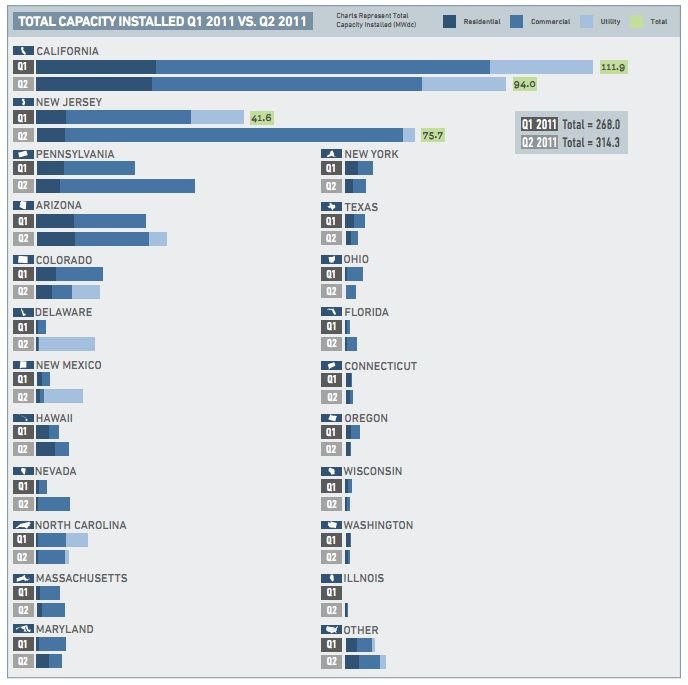
Late last month the Department of Energy noted that the Weatherization Assistance Program, which was greatly expanded by the American Recovery and Reinvestment Act, had since 2009 increased the energy efficiency of more than 500,000 low-income homes and employed more than 14,000 weatherizers and workers in the energy efficiency supply chain.
One of the most high-profile support industries in the energy efficiency realm is, of course, the solar industry. Like the WAP, whose bureaucratic complexities caused it to stumble out of the gate in many states and land in the crosshairs of conservative critics, the solar industry has gained notoriety with the half-billion-dollar failure of solar component manufactuturer Solyndra. At the same time, however, it also is gaining credibility as an employer of some significance and a deployer of technology that can greatly reduce reliance on the grid for electric power.
On September 19, the nonprofit Solar Foundation summarized preliminary data from an analysis titled “National Solar Jobs Census 2011: A Review of the U.S. Solar Workfore,” which shows that solar businesses added 6,735 new workers in all 50 states since August 2010, representing a 6.8% annual growth rate. That growth rate, the Solar Foundation is happy to point out, contrasts sharply with the nearly flat jobs growth in the overall economy. During the same period, the report adds, the fossil-fuel electric generation workforce shrunk by about 2%.
Still an emerging player
Overall, the solar industry workforce is still relatively tiny, having grown from 46,000 in 2009 to about 100,200 today. But as commercial building owners and homeowners look to cut energy costs – and hedge against rising fuel prices – solar power, coupled with design and construction techniques that increase buildings’ energy efficiency, likely will become a bigger player in the economy, even if the U.S. isn’t leading the charge in innovation and manufacturing. Since 2010, the Solar Energy Industries Association notes in a recent report, demand for photovoltaic systems has grown about 70%.
Conducted by the Solar Foundation and Green LMI (a division of BW Research Partnership) with technical assistance from Cornell University, the census examines employment throughout the industry, including installation, wholesale trade, manufacturing, utilities and all other fields, and includes growth rates and job numbers for 31 separate occupations. It also examines solar employment at the state level.
The full report will be available at Solar Power International ’11, a trade show and conference scheduled for October 17-20 in Dallas.
Fine Homebuilding Recommended Products
Fine Homebuilding receives a commission for items purchased through links on this site, including Amazon Associates and other affiliate advertising programs.

Affordable IR Camera

8067 All-Weather Flashing Tape

Reliable Crimp Connectors

The U.S. installed 314 MW of PV in the second quarter of 2011, 69% more than during the same period in 2010 and 17% more than first-quarter 2011 installations of 268 MW, according to a study by the Solar Energy Industries Association.





















